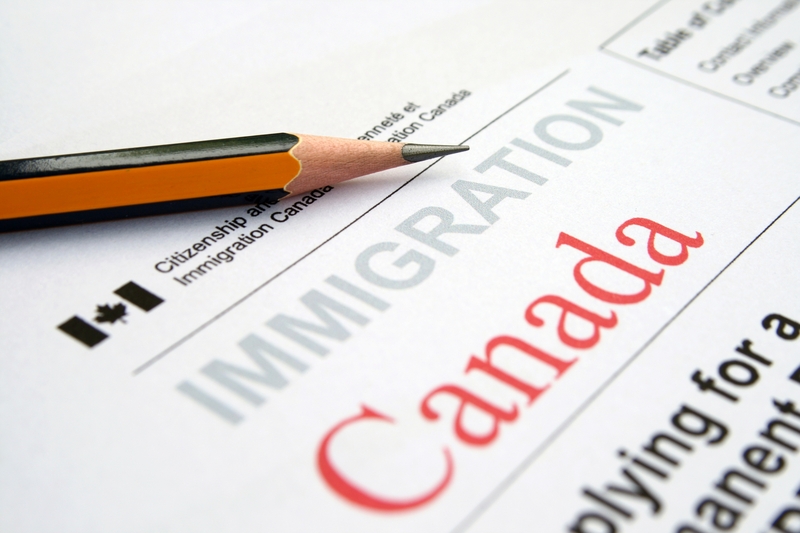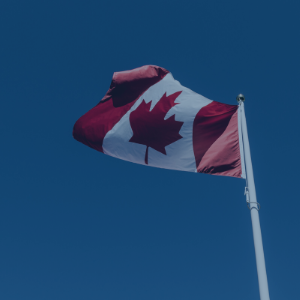
A rising tide of time-for-a-change sentiment has left the Liberals dropping as all three of their main opponents see gains. This finding is from an INNOVATIVE survey in field from August 26th to August 30th, 2021, with a weighted sample size of 2,400. Full methodology in the appendix.
Liberals Drop as all Three Major Opponents Gain
The challenge for the Liberals is they have some appeal to every segment of the electorate. But that electorate is diverse and there are few points of consensus. The first two weeks of the election show how challenging it is to keep the Liberal coalition together.
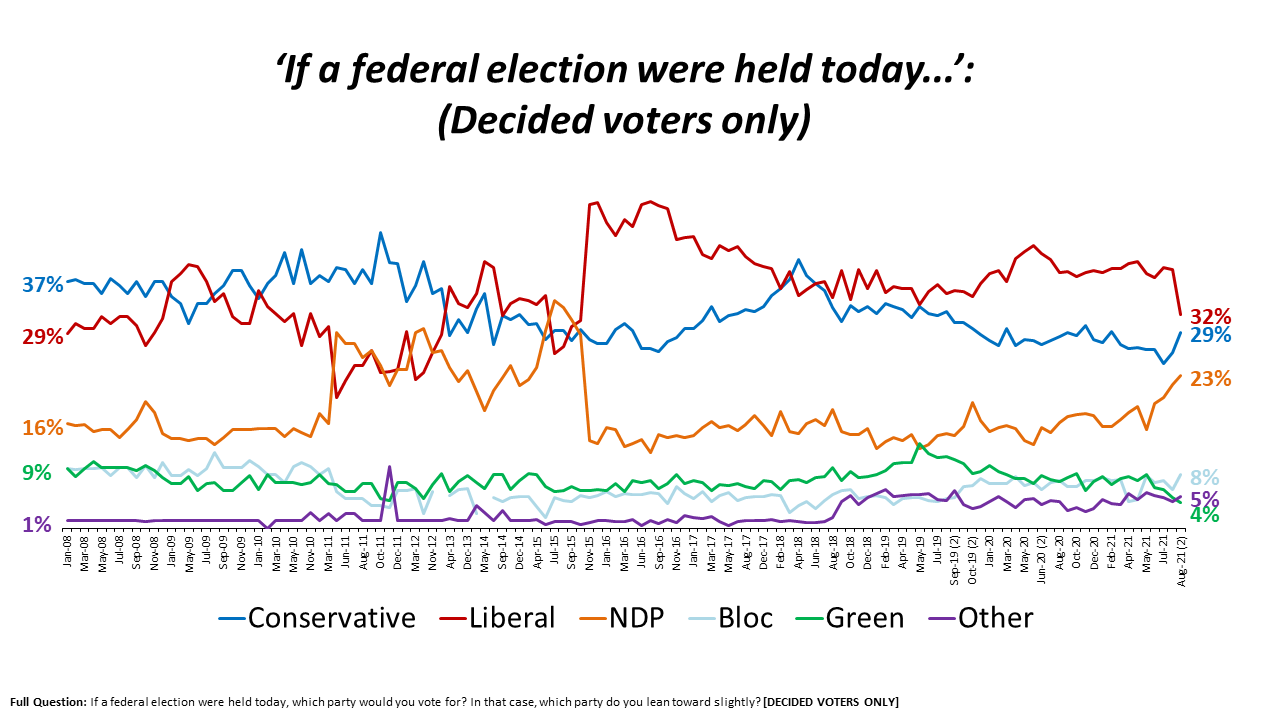
The Liberals have dropped 6-points in decided vote while the Bloc, NDP and CPC are all showing gains. This decline can be seen in every region and age group and within both genders.
Time-for-a-Change is Rising
The election call has triggered a significant increase in time-for-a-change. Our initial election analysis noted that time-for-a-change had been creeping up since the Spring and would not need to grow a lot more to make a big difference to the Liberal. That increase has happened.
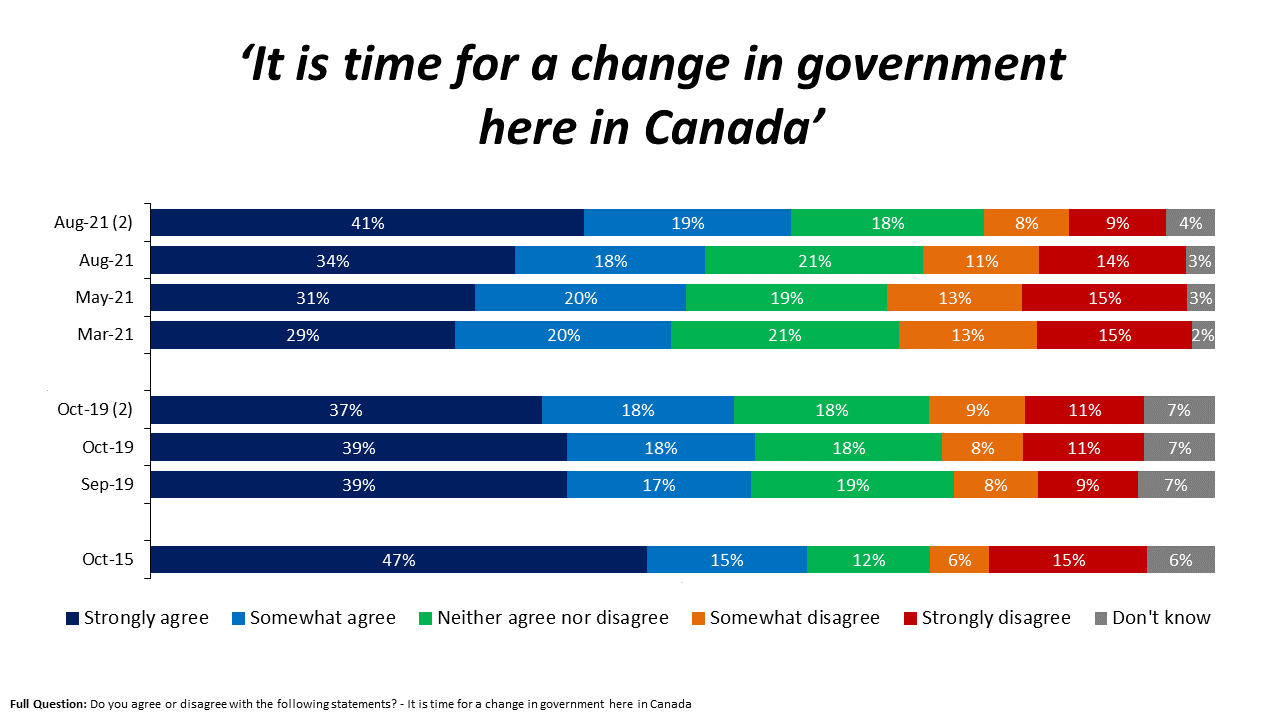
Time-for-a-change is up 8 points over the past few weeks. It is now five points higher than on the eve of the 2019 election and just 4-points below the level seen for Stephen Harper (although with less intensity).
A lot of Change for Limited Attention
These dramatic changes are occurring with many Canadians still at the beach, lake, camp, cabin, or cottage. Four-in-ten (40%) voters surveyed said they had not read, seen, or heard about any party lately. Even if we look only at respondents who say they definitely plan to vote, 30% have not heard anything about any party. The Liberals (51% aware) have the most awareness followed by the CPC (41%) and the NDP (32%) and Bloc (30%:Quebec only).
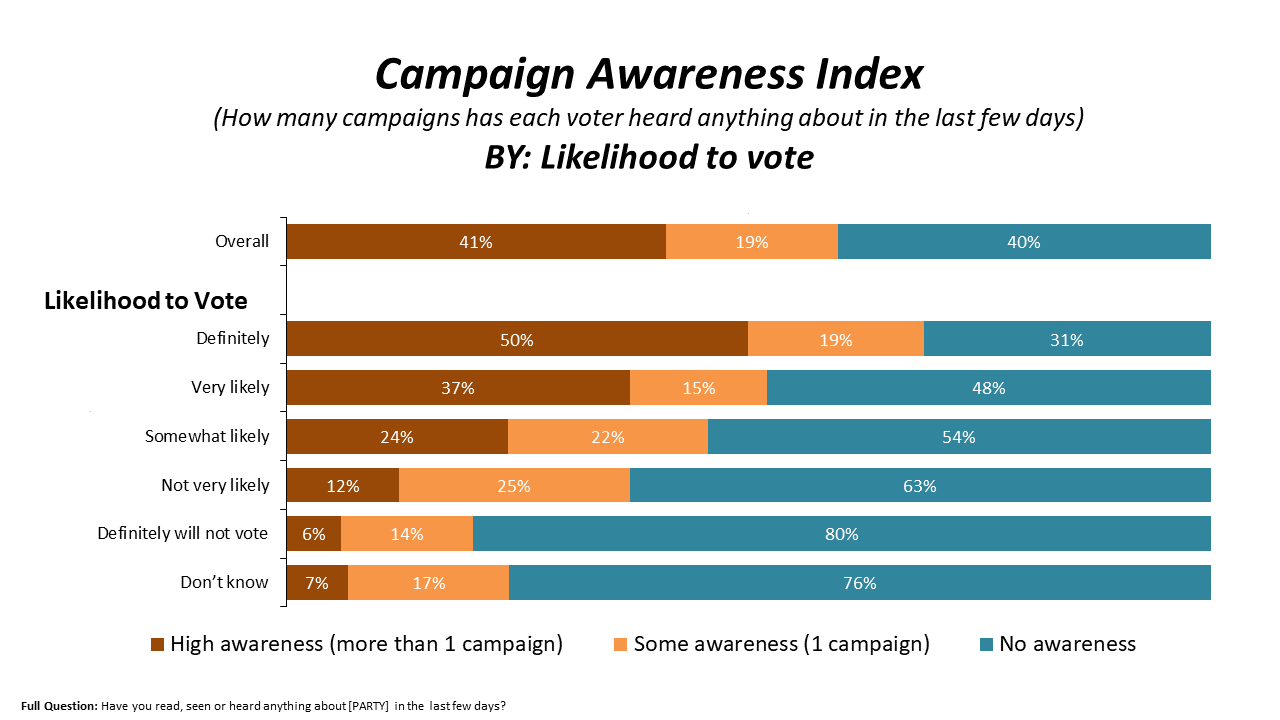
Although awareness is somewhat limited, those who are paying attention are being impacted. The impact of the public debate has been strongly negative for the Liberals (-28), positive for the NDP (+22) and Bloc (+18) and evenly divided for the CPC.
Breaking News: Afghanistan
Much of the news for the past week has been focused on the end of US/NATO military presence in Afghanistan. However, as with the campaign, our research finds there has only been a moderate level of awareness with 6-in-10 voters are following the issue. Afghanistan is primarily an issue for Conservatives. Conservatives are not only more likely to be following the story, 60% of Conservatives feel angry about it.
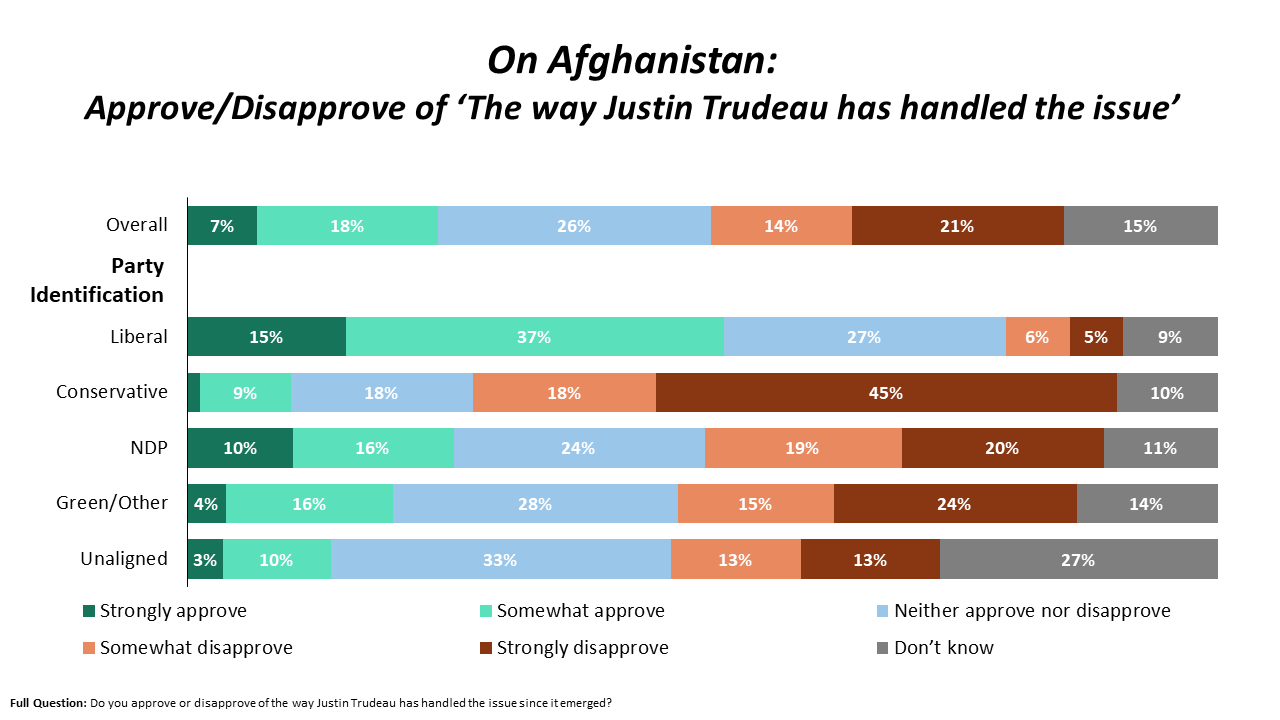
But while the issue is clearly rallying Conservatives against the government, it is having much less impact among other partisans.
Spotlight on the Liberals
While the Liberals have lost a lot of ground, they are not without their strengths. The Liberals are still ahead on federal party ID (24%), “best prime minister” (34%), and federal combined vote (28%). As a party, the Liberals are punching above their weight on vaccine self-reliance, immigration issues and women’s equality.
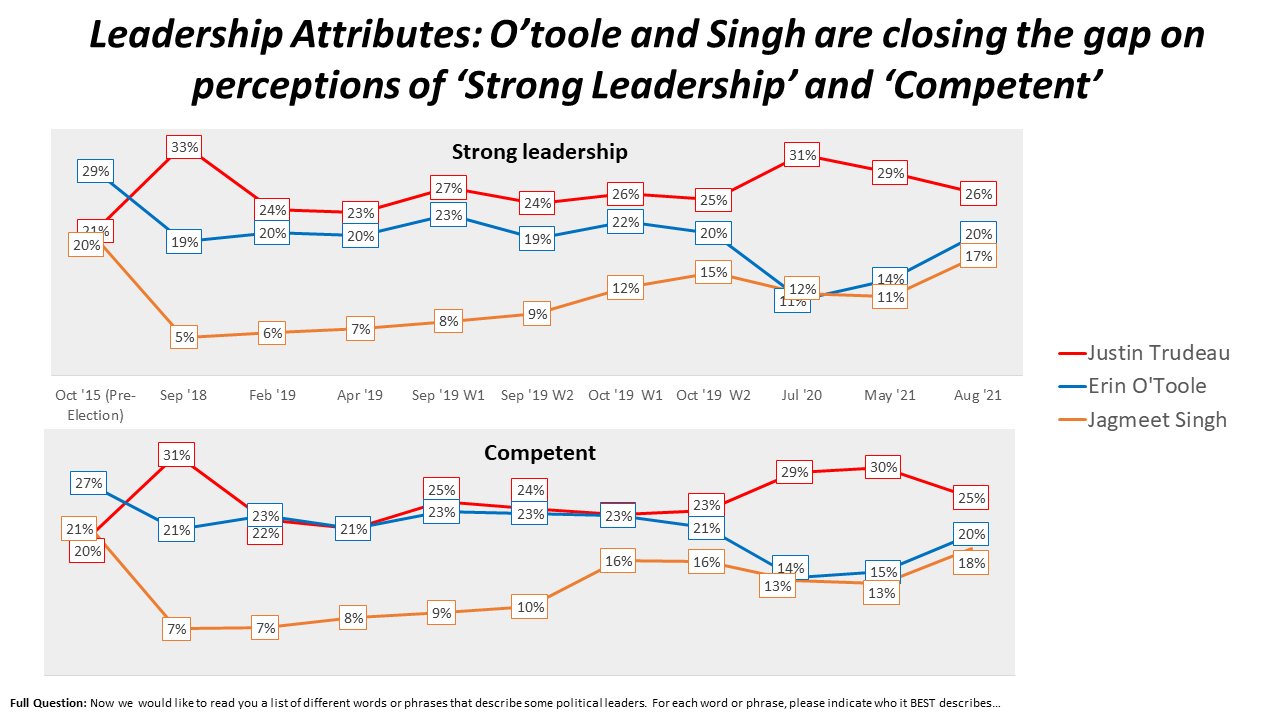
As a leader, Trudeau is still ahead on strong leadership and competence. However, Trudeau now has the lowest net favourables of the four main contenders.
Spotlight on the CPC
The Conservative shift to the middle in the beginning of this campaign has delivered on a number of fronts. O’Toole’s has climbed 8-points on “best prime minister” (28%), and he has gained 4 to 6 points on positive leadership attributes. The party has also shown gains from 4 to 8 points on almost every party attribute. The CPC now have small leads on the Liberals on jobs (+3) and the cost of living (+4), two critical issues.
The story is more complicated when we look at which groups the CPC are gaining in. As might be expected, the move to the middle is resulting in more support from the deferential value clusters – Deferential Conservatives and Business Liberals.
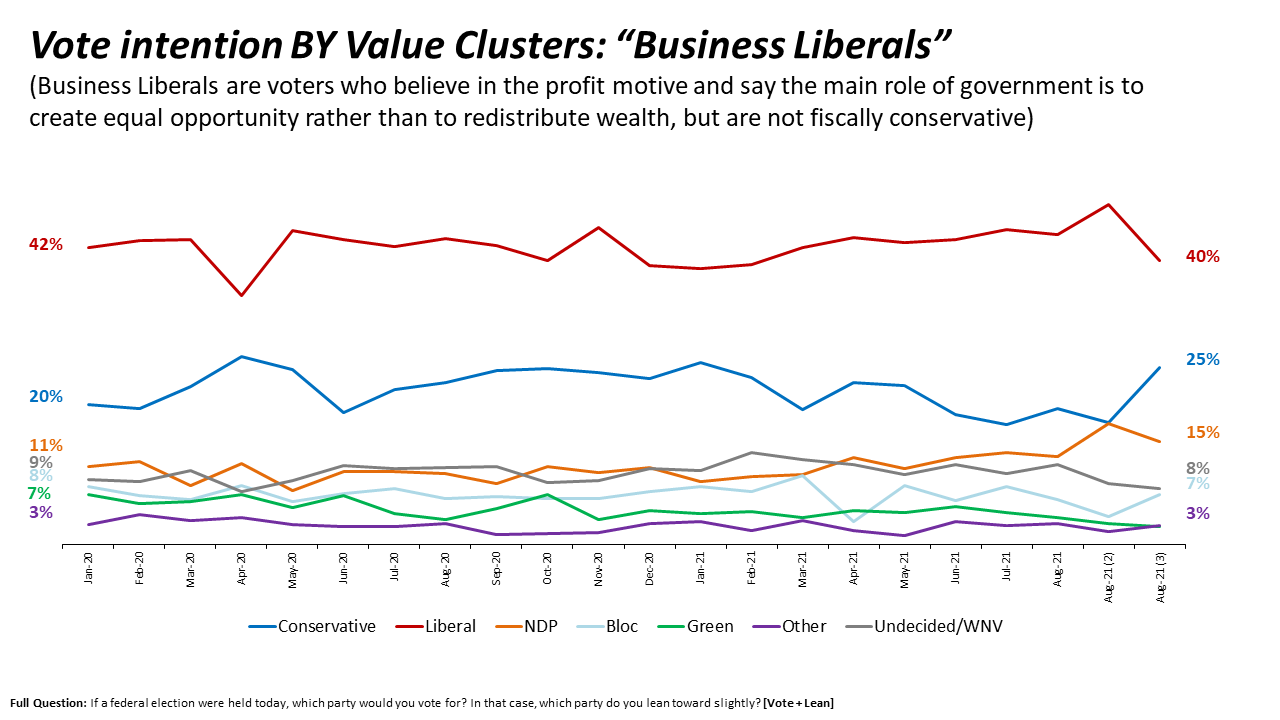
But the CPC have lost ground with Populist Conservatives and are treading water with Thrifty Moderates, the two more populist segments. The CPC has also gained ground with an economic segment dubbed ‘Dream Achievers’ in our analysis — respondents who report believing in the “Canadian Dream” and not struggling to get by.
Overall, the shift to the middle has paid off. But to do better, the Conservatives have to find issues that will unite both their populist swing voters as well as their more deferential swing voters.
Spotlight on the NDP
It is remarkable that the NDP has gained so much with such relatively low awareness. However, it is clear that those who have heard something about the NDP like what they are heard. Among those who did hear something about the NDP, more favourable impacts were 22 points higher than more unfavourable towards the NDP.
The big underlying change in NDP numbers are on leadership. Since May, Singh’s is up 7-points on ‘cares about people like me’ as well as ‘stands for what I believe’, 6-points on ‘strong leadership’ and 5-points on ‘competent’ and ‘represents positive change’. The NDP party attribute scores are also improving, but less dramatically than on leadership. While most attributes are up, gains tend to be between 1 to 4 points.
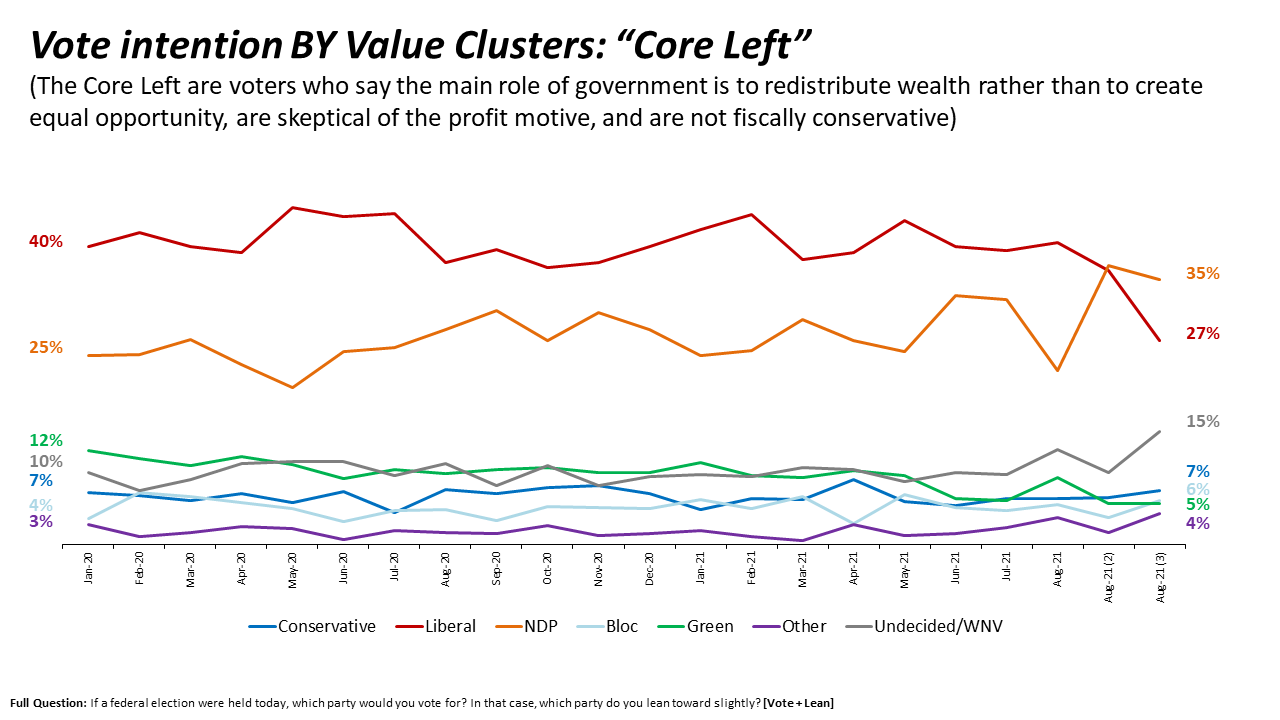
Looking at who is moving, the NDP are now tied with the Liberals among the ‘Left Liberal’ value segment and the NDP (35%) are now ahead of the Liberals (27%) among Core Left voters. The NDP has gained 12 points among the Core Left since the start of the campaign.
The question is, how far can the NDP go? This survey asked voters to agree or disagree with two statements, one on frustration with the two major parties and the second on concern about a pressing social deficit. This allowed us to identify voters looking for ‘progressive’ change but not seeing it in the two main parties. We find a potential pool of 38% of Canadians open to a progressive alternative to the two main parties.
Despite fairly low awareness, the NDP campaign has made significant gains powered primarily by Jagmeet Singh’s leadership gains. This poll shows many more Canadians are open to the NDP’s message, if they can gain those voters’ attention.
Spotlight on the Bloc
The challenge from the Bloc in Quebec remains a potent one for the Liberals. Among QC voters, the Bloc (30%) is 3 points up on the Liberals (27%). The Bloc are still substantially ahead in Quebec federal party ID, with 28% of QC respondents reporting to be Bloc partisans. Further, Blanchet’s net favourability in Quebec sits at positive 15%, up 8 points since the last wave of polling.
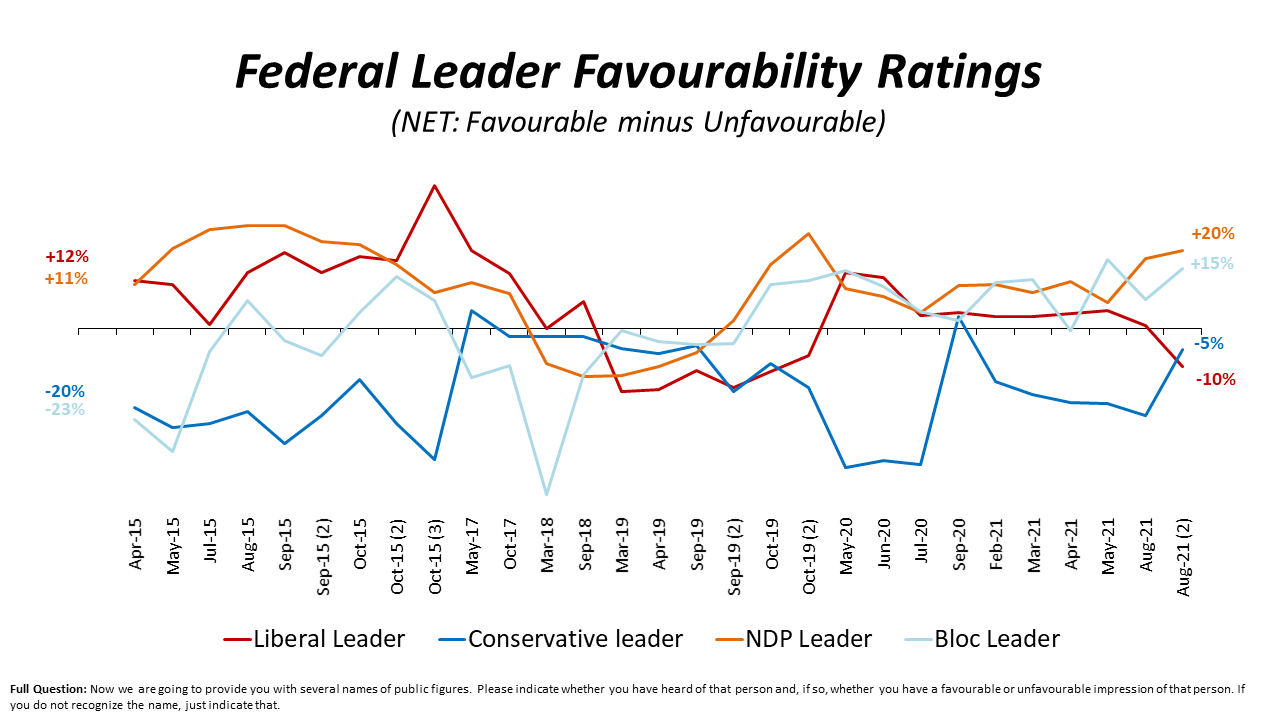
One key question as election day near is whether the Quebecers would rather send opposition members who will never compromise Quebec’s interest or send government members even if they have to compromise. There are almost as many Liberal voters (22%) who want to send non-compromising opposition members as there are Bloc voters (28%) who want someone in government.
Summary
These are not sunny days for the Liberals. Six-in-ten (60%) Canadians say it’s “time for a change”. The NDP is siphoning off Liberal support from the Left Liberals and Core Left. The CPC is beginning to pull away Business Liberals and Deferential Conservatives and has edged out the Liberals among ‘economic haves’. The Bloc is entrenched in Quebec with a broad base of support. The opposition parties are off to a strong start.
However, a week is a long time in politics and three weeks is an eternity. The week after Labour Day brings the TV debates and many Canadians tuning in for the first time. Almost half of our respondents want to hear more before making up their minds. If the Liberals can use that week to reframe the campaign, they can still rebound. But their job is much harder now than just three short weeks ago.

